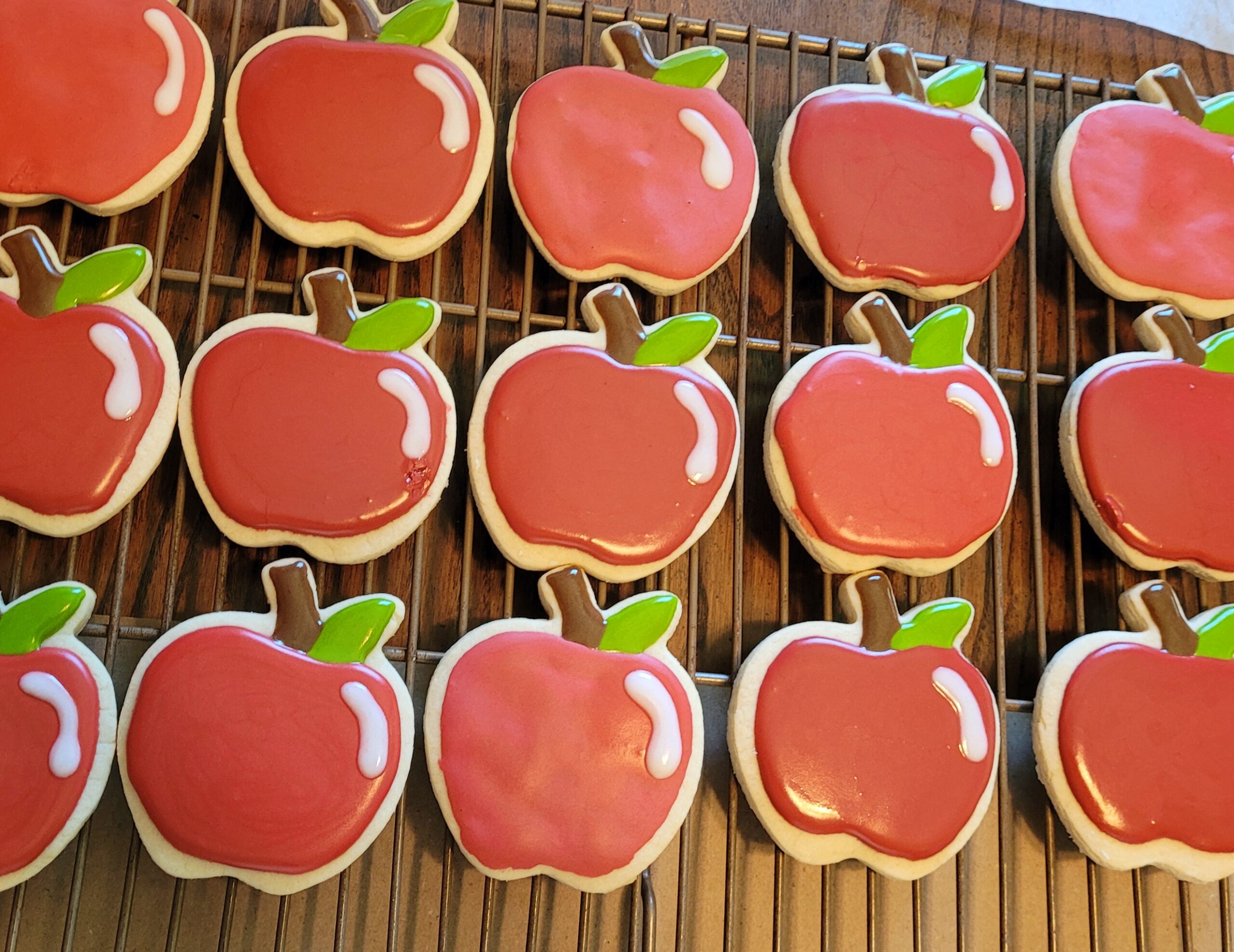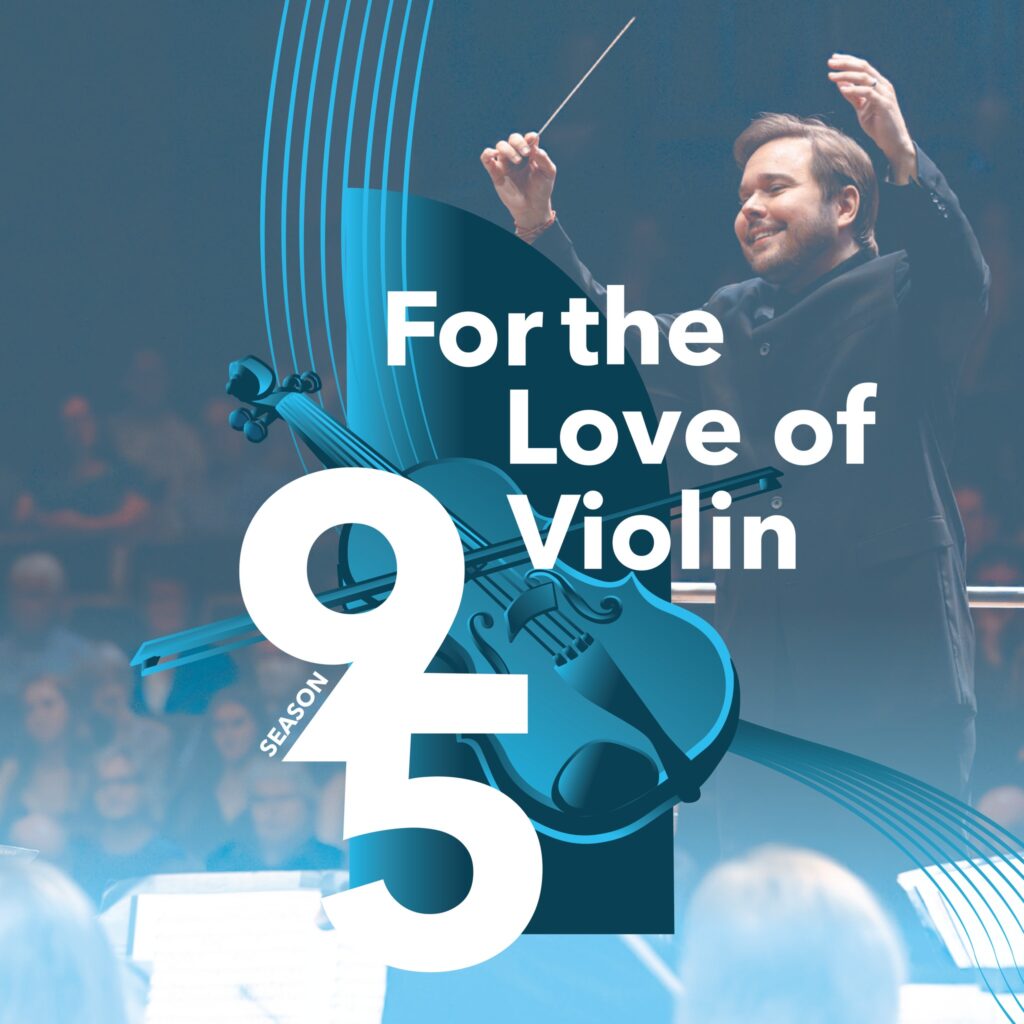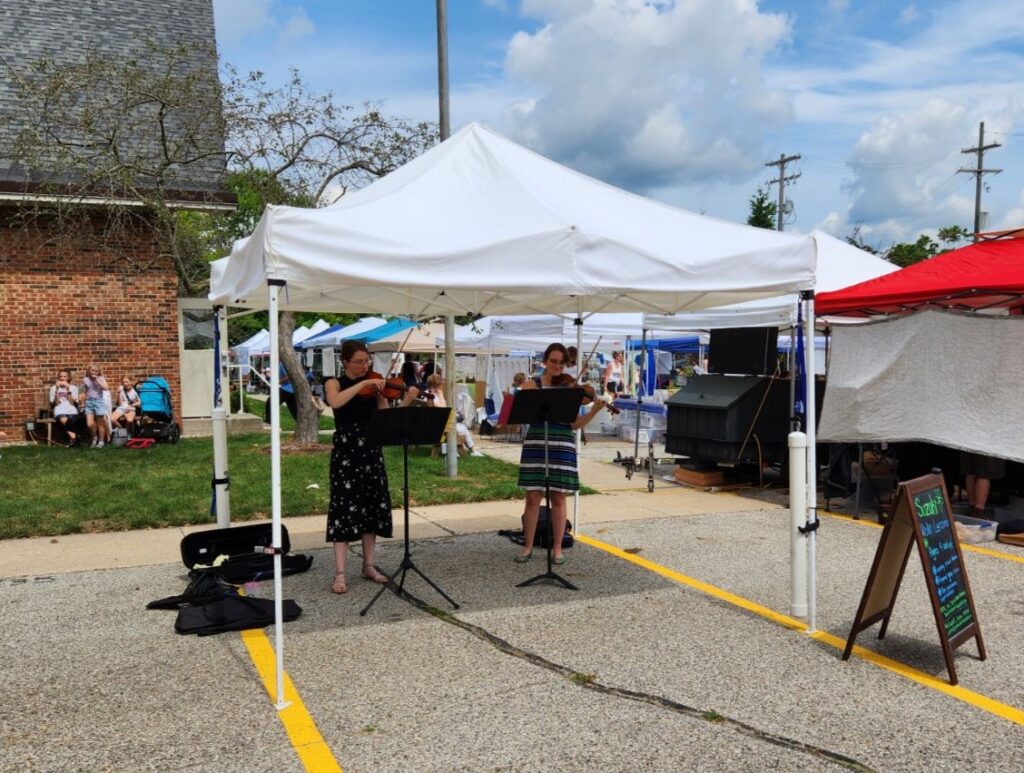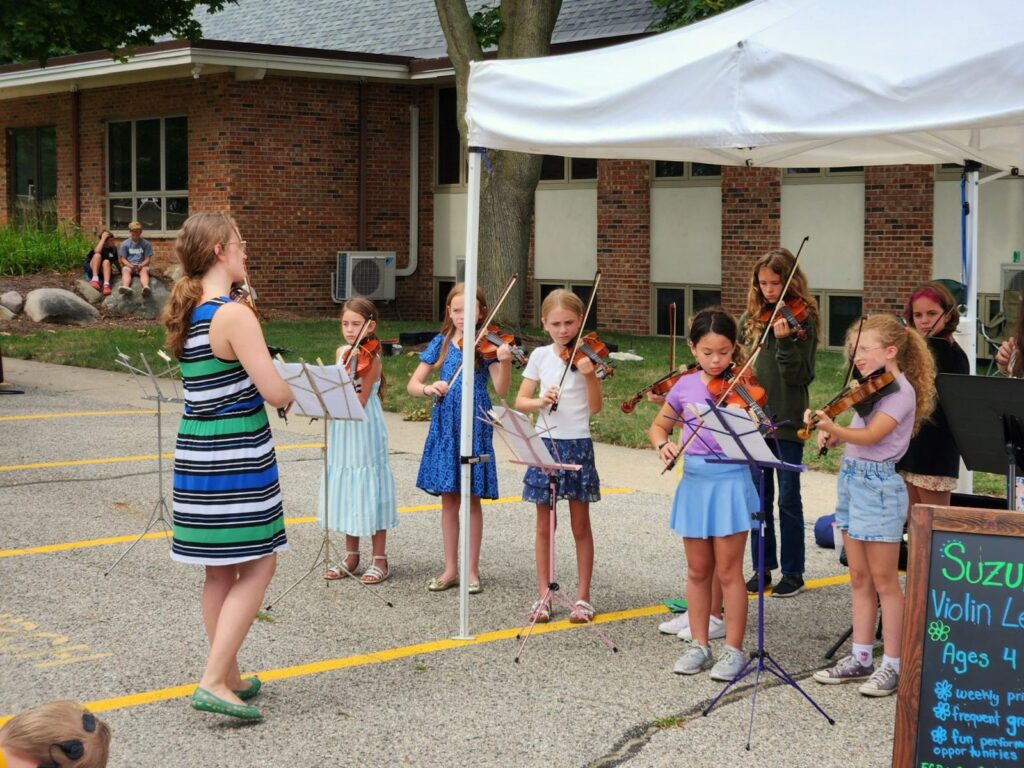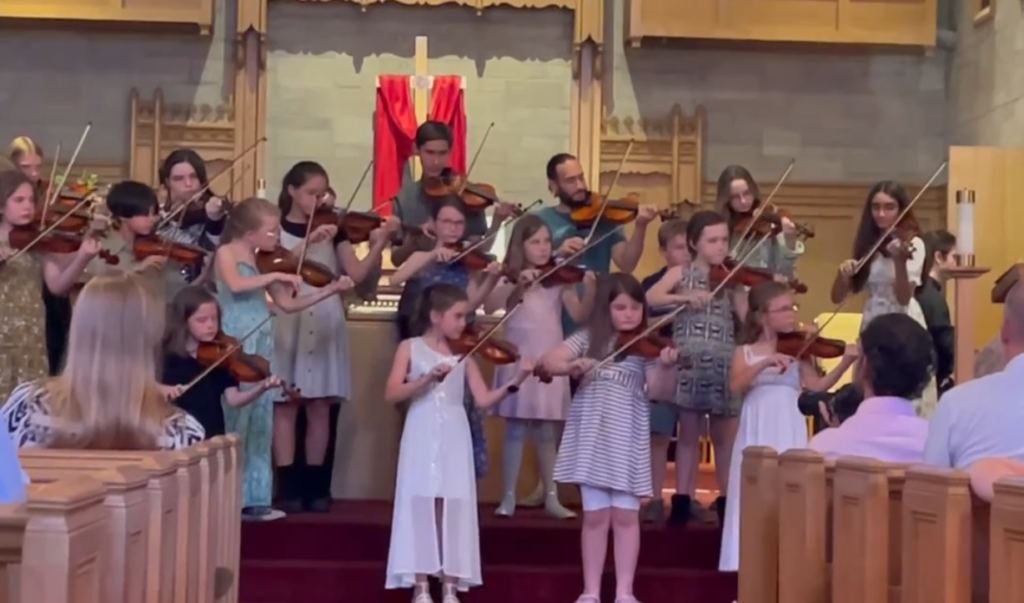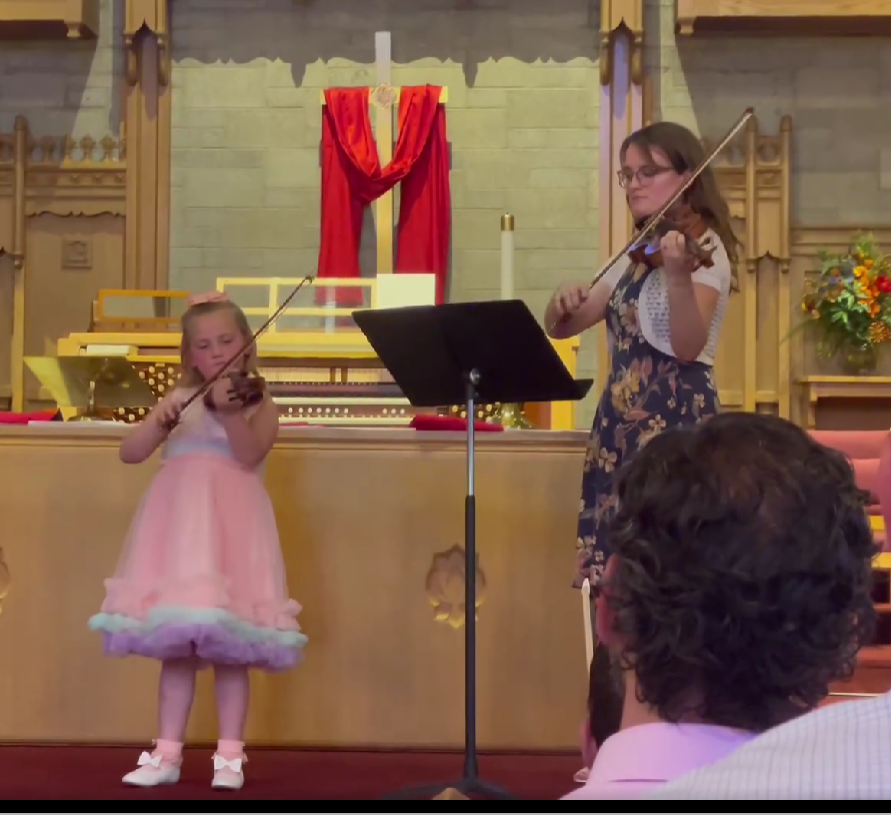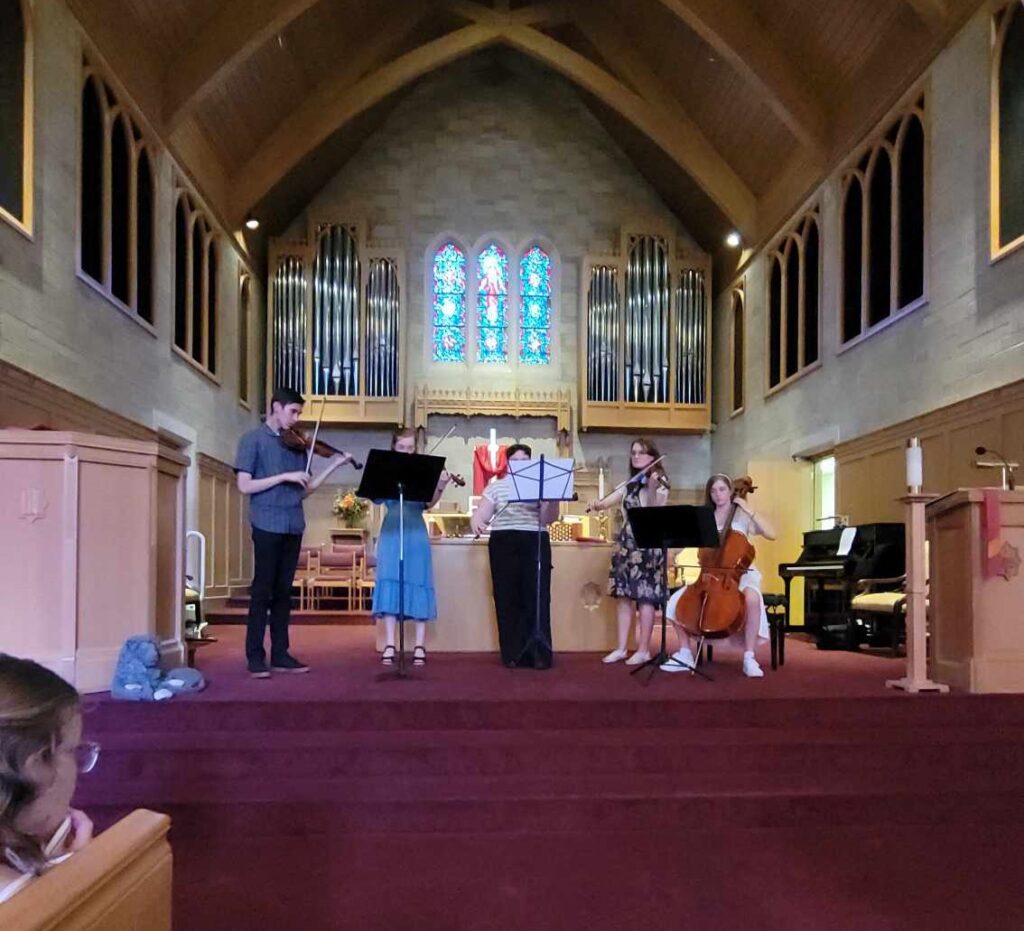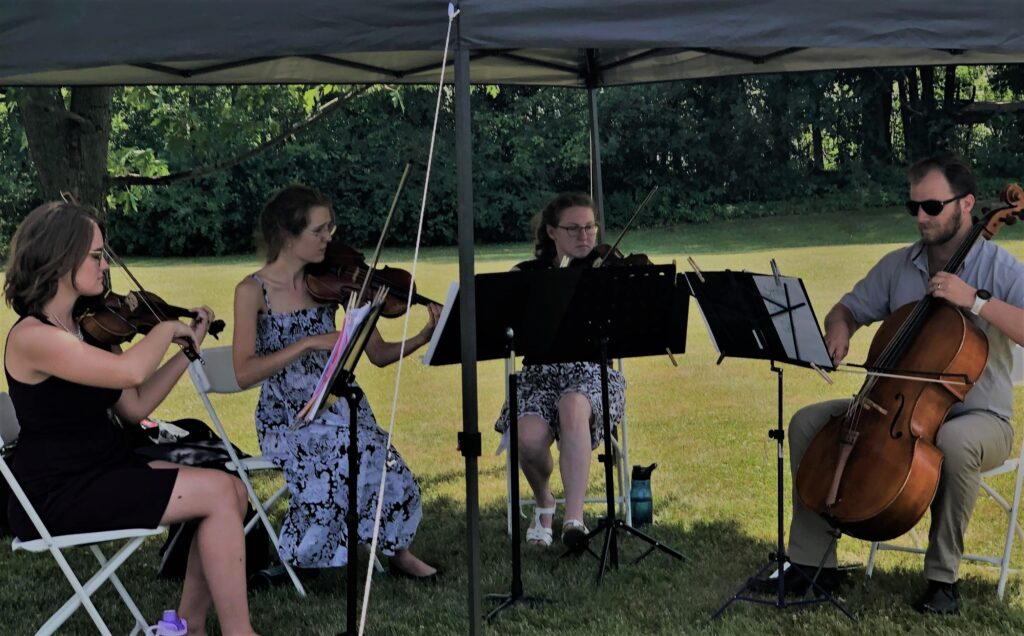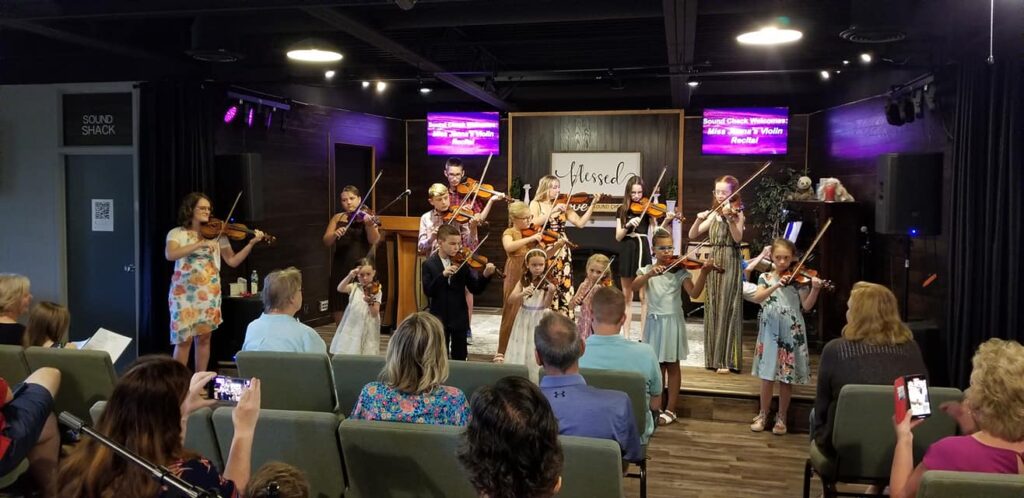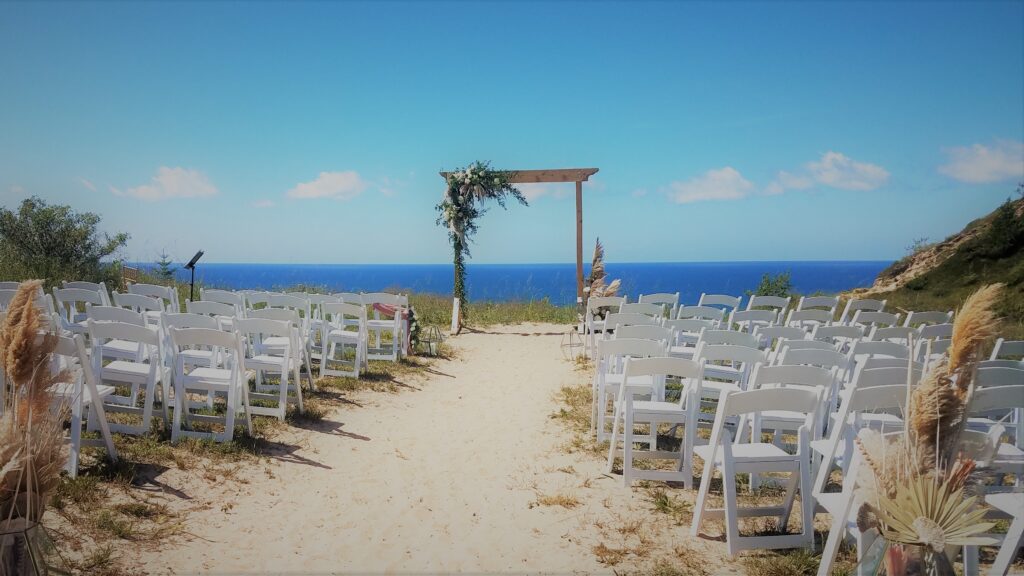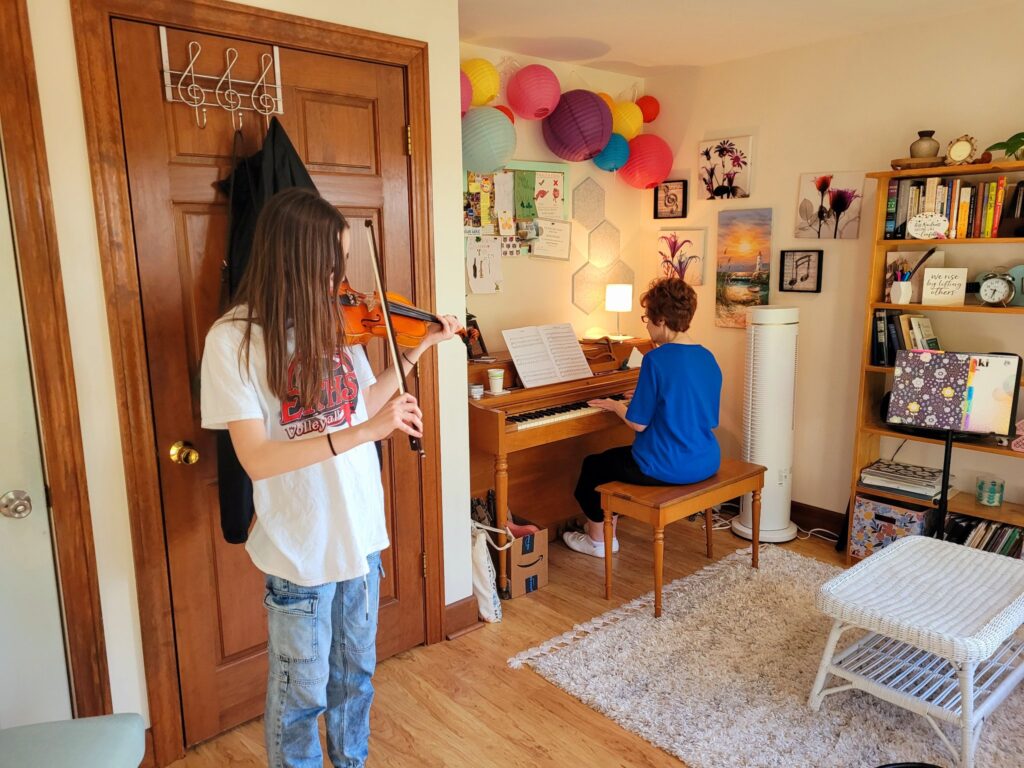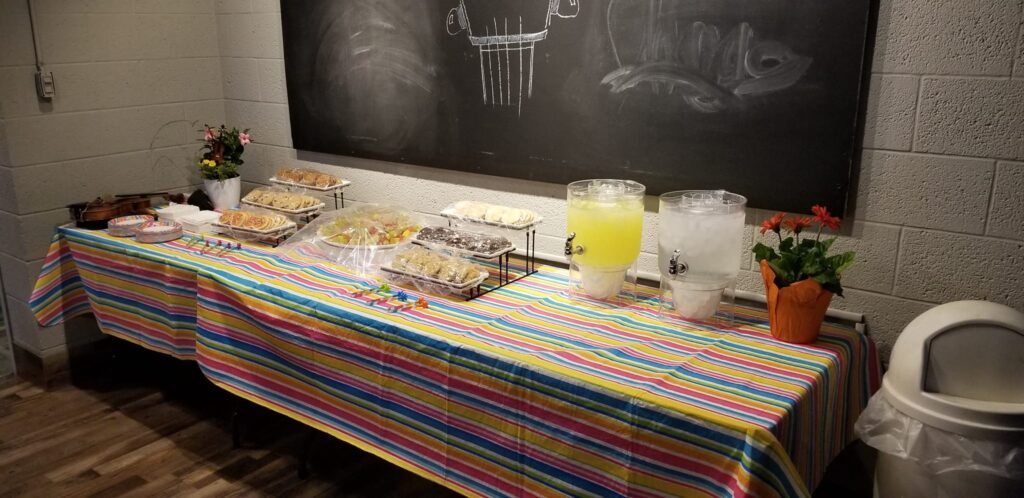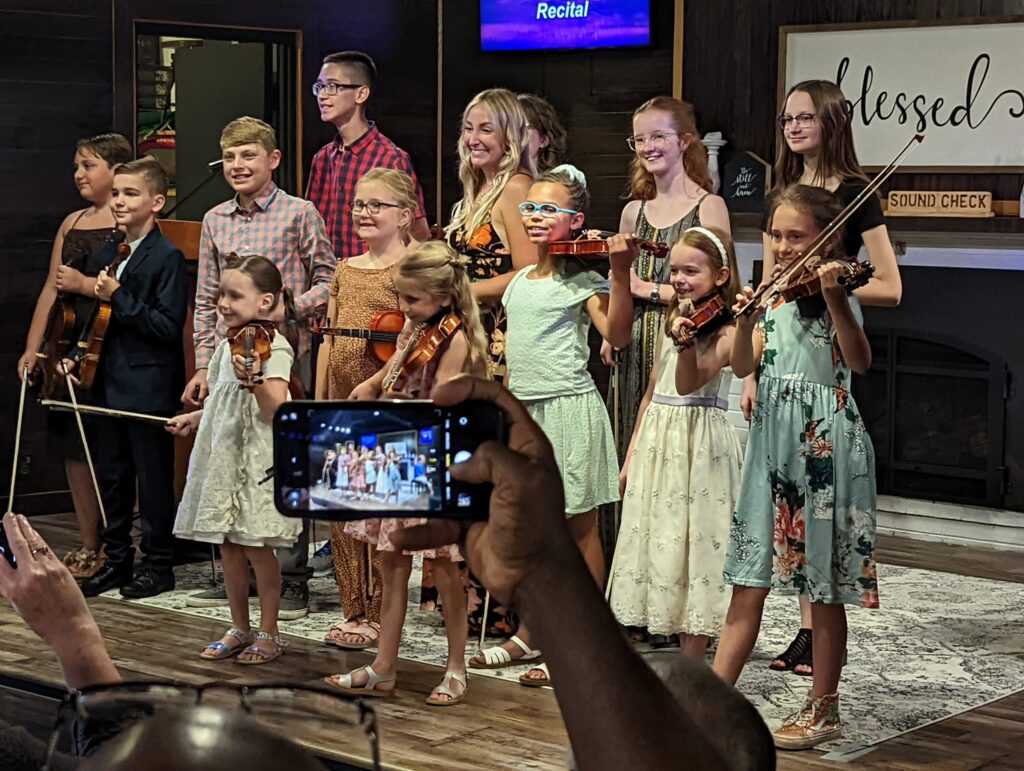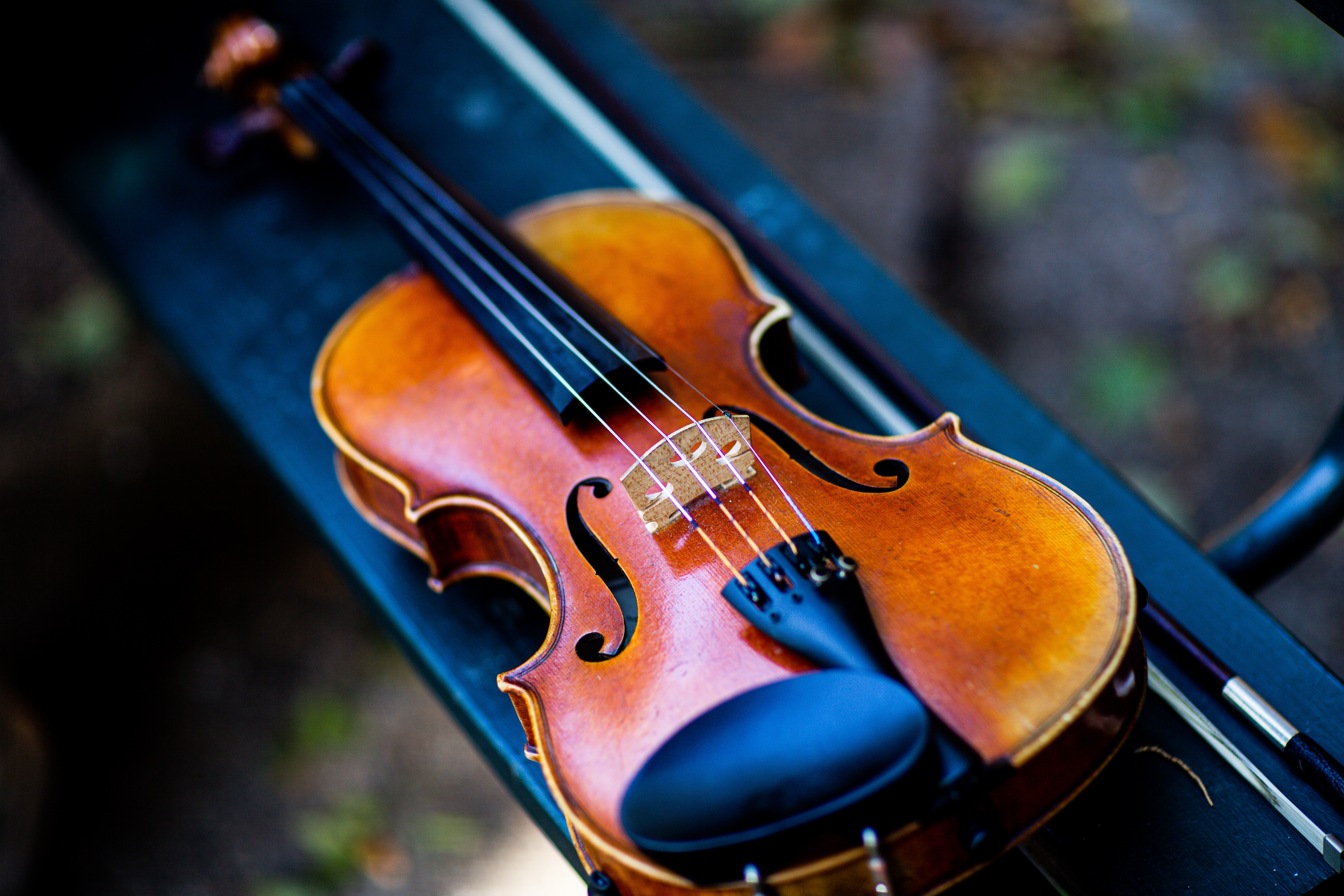Practice Incentives for Violin Students
As a private studio teacher, you may have struggled with your personal philosophy behind practice incentives. We want to be careful to encourage intrinsic motivation in a student rather than squashing it with extrinsic motivators. Students should practice because it makes them better, and they’ll be able to play more music when they’re better at their instrument.
That’s all well and good for the self-motivated pre-teen student, who has already learned that hard work will result in a new skill. However, if you are a Suzuki teacher like I am, you probably have more than a couple students under the age of 6 who have not had a chance to learn this. When the Suzuki Method was first gaining international recognition in the 1960’s, it was at a time when there was generally a parent who was home every day to help the child practice, usually the mom. It was also a time before video games, smart phones, and tablets were commonly found in households across the nation. Now, it’s more common to find families that have both parents in the workforce, and we have daily competition from screens for our students’ attention. For these families with students who have not yet developed their intrinsic motivation to practice, we need a way to encourage students to practice that doesn’t rest solely on a parent’s ability to have the mental bandwidth to encourage, beg, and sometimes argue with their child to practice each day. That’s why, in my opinion, a little external motivation doesn’t hurt the student.
Introducing: Practice incentives! AKA prizes, rewards, bribes, etc…
If you’re a new teacher, or just a teacher new to giving prizes for practicing, I have two tips from my previous experience.
- Keep it Simple: I’ve had elaborate challenges that seemed like a great idea in my head, but were actually really hard to explain once I was in a lesson. This is not helpful in motivating a student, especially a little one who is just barely grasping why we need to practice in the first place.
- Keep it Consistent: If you introduce a practice incentive of some sort, everyone needs to be held to the same standard. I made the mistake of thinking that as a private lessons teacher, my students wouldn’t have the opportunity to compare their progress with one another. This is simply not the case when you are serving a local community – some of them are bound to have friends within the studio, know each other from school, or if your studio is like mine, you’ll probably have a lot of siblings who are both taking lessons.
And now without further ado, here are some ideas for practice incentives you can implement into your own studio!
Practice/Listening Challenges
I’ve done practice challenges periodically ever since branching out and doing lessons out of my own studio. I’ve tried a variety of things in the past, and I found that having two challenges a school year is plenty.
Practice Minute Challenge
This challenge is really basic. Students record their practice minutes and win prizes as they meet designated goals. There are lots of different personal twists you can add to these challenges, but what I do, is designate the month of October each year as my “Practice Challenge Month”. I have four tiers of prizes that students can win depending on how much they practice. I calculate this based on how much time I recommend each student practices each week. So for example, for a Book 1 student, I recommend that they practice for at least 30 minutes 5 days a week. They win their first prize at 150 minutes, the next at 300, the third at 450, and the final prize at 600 minutes. If the student practices the amount I recommend, then each week, they go home with a prize. If they don’t, they’ll only win two or three prizes that month.

Lets face it, we all have some students who will only earn one prize in the month, and it’s our job to love them just the same as our other students. This challenge helps them get a prize, too!
I get my prizes either at the dollar store, or you can order little arcade prizes from Amazon. I’ve also gotten prizes at a real arcade to pass on to my students – I love going to Dave and Busters, but I don’t need any of the prizes you get for the amount of tickets I win.
Quick tip: I used to lay out my prizes on a bookshelf in my studio so that they could see what they were practicing for. That was far too distracting during the lesson, so now all of my prizes are in a box that they only get to see if they win a prize.
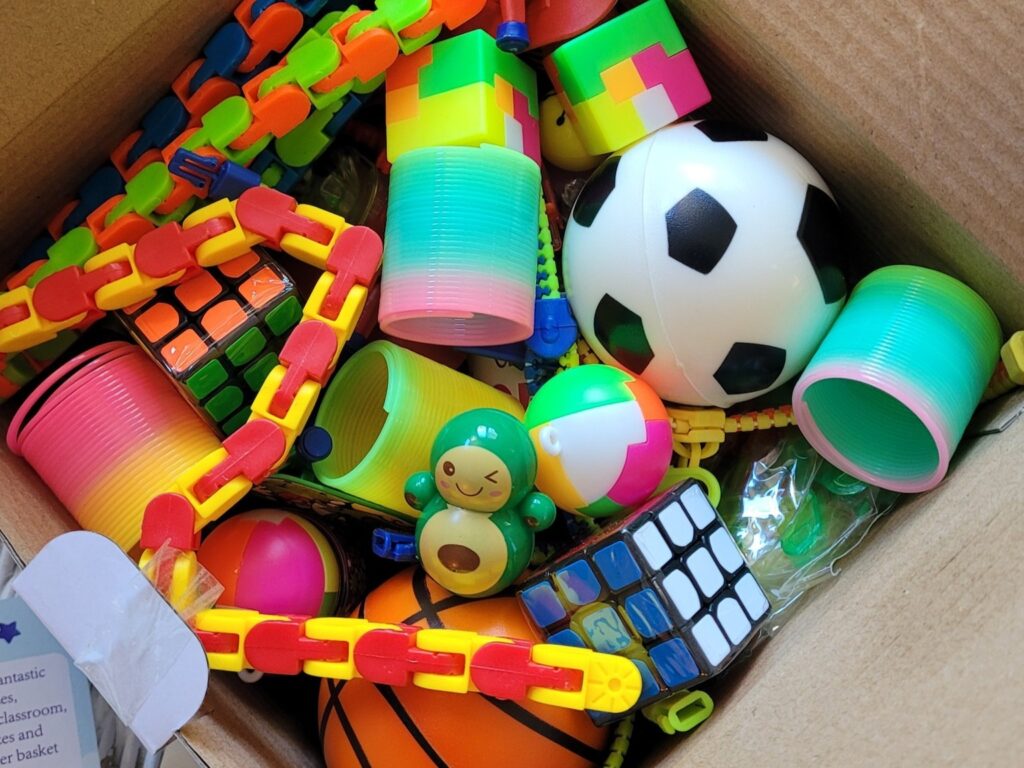
I add an extra incentive by awarding the student who practiced the most out of their group a $5 gift card to Meijer.
Listening Challenge
I’ll admit that I haven’t found a perfect challenge for this yet. As a Suzuki teacher, my job is to encourage families to listen to the music they are going to learn. The student simply will not learn effectively (meaning they will learn to play with mistakes, or take several months to learn each piece) without daily listening, especially in Book 1. And yet, a lot of my families just don’t do it, or only do it once a week on the way to lessons.
For two years in a row, I have done a “November/December Listening Challenge”. My idea is that during the holidays, even if you can’t get to the violin every day, at least you can do your listening. The first year I did this, I encouraged students to listen for 2/3 of the days remaining in the calendar year (which is still lower than what I tell families they need to do), and if everyone did at least that, they would all win a pizza party. My students did not win a pizza party that year.
The following year, I promised everyone a cool notebook to start out the new year if the studio could do 2/3 of their listening in November and December. Remember when I said earlier that it was important to be consistent? I broke that rule for this challenge. My studio did not meet the 2/3 goal and I found myself needing to reward the students who had, for the second year in a row, diligently done their listening every day to try to bring up the studio’s average. Students who did their listening every day did receive a special, music themed notebook that I got on Amazon to celebrate their listening achievement.
The studio-wide challenges have been a swing and a miss for me, so next year, I’ll be making my listening challenge a personal challenge for each student. I am very interested in ideas from Suzuki teachers for encouraging listening that do not include dismissing students from my studio!
Practice Bingo
This was a super fun challenge for me to do in 2023, and my plan is to alternate this each year with my practice minutes challenge each October. Each “Bingo” results in a prize out of my prize box.

Milestone Awards
These rewards are a little easier to keep up throughout the year if you keep the materials on hand. These can be given for graduating pieces in a method book, completing a method book, attending a certain number of lessons, or completing a first recital.
- Colorful Ribbons. Margaret Hawley-Lowry, who teaches in Zeeland, suggests awarding students who pass a challenge piece in their method book with a colorful ribbon to put on their violin case. At the end of the year, students can see how colorful their cases have become!
- Peg Gremlins. My students at Jenison Public schools have come to lessons with finger monsters on their tuning pegs. This one deserves a picture:
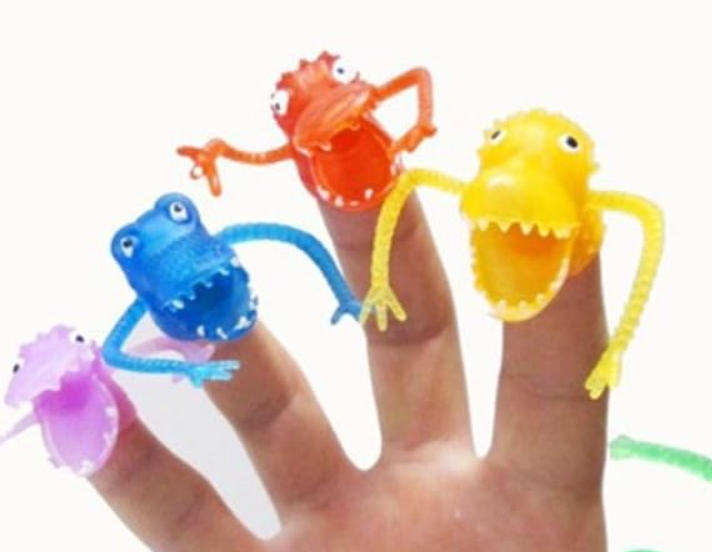
- Certificates. Never underestimate the power of a professional looking certificate that students can hang on their fridge at home!
- Candy. This one is pretty classic, but be sure to have options for students with allergies. When I was a student at Blue Lake, my orchestra teacher in the summer before 7th grade would give candy to one student at each rehearsal as a “Posture Award”.
- Cupcake Graduation. I teach my students to hold their bows with their thumb outside of the frog. After they’ve learned all of the Twinkle Variations, Lightly Row, Song of the Wind, and Go Tell Aunt Rhody, they perform all four of them consecutively for me at a lesson. After they perform the folk songs from Book 1, my students graduate from their practice bow hold to moving their thumb inside the frog, and they also earn a cupcake! I adapted this idea from my piano teacher’s (Susan Crosser) Cupcake Graduation, celebrating the first few pieces in the piano Book 1.
- New Strings. This is not something I provide for students, but I encourage the parents of my students to reward their student with a new set of strings when they graduate Book 1.
- 100 Lesson Club. I write notes for each of my students so I can remember what they’re working on, and sometime a few years ago I decided that while I’m writing the notes, I might as well write a number each lesson. Students who have attending 100 lessons receive a certificate and are part of my “100 Lesson Club”. Members of my 100 Lesson Club are recognized each year in the spring recital program.
- Magic Rosin. My friend and quartet member, Jamie Listh, who teaches at Trinity North, found these amazing rosin cakes to reward students with.

Behavior-Based Prizes
My Pre-Twinkle students are often still learning what behavior is appropriate for lessons. After seeing several families using a point-system to reward good behavior with their littles, I decided to make up my own system.
Pre-Twinkle students are able to earn up to 3 Cookie Points per lesson. One for participating in the lesson (no stalling), one for following my directions without complaining, and one for following my house rules (no yelling, no hitting, etc.). After students earn a total of 15 points, they win 3 cookies. I have a couple of girl scouts in my studio, so I buy a ton of girl scout cookies and freeze them to give away as rewards. I also like to bake so when those are out, I make chocolate chip cookies, or my mom and I love decorating seasonal sugar cookies. Remember to have a gluten free and dairy free option if necessary.

What types of prizes do you give to your students? I would love to hear your ideas in the comments!

